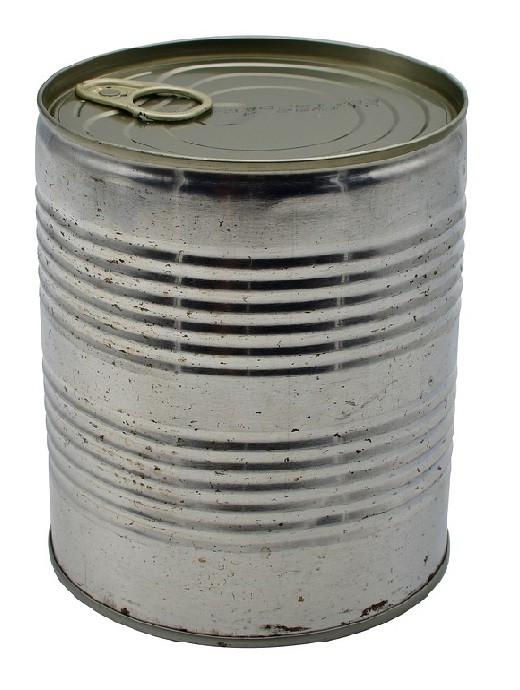Soldering Iron Wattage for Automotive Work: Complete Guide for DIY Mechanics
Choose the right wattage soldering iron for automotive work
Work on automotive electrical systems require the right tools for the job. Among these essential tools, a soldering iron with appropriate wattage stand out ampere critical for make reliable electrical connections. Whether you’re repair a damage wire harness, install after market electronics, or fabricate custom circuits, understand solder iron wattage requirements can make the difference between a professional quality repair and a frustrating failure.
Understand soldering iron wattage
The wattage of a soldering iron doesn’t direct indicate its temperature. Rather, it represents the tool’s power capacity and ability to maintain heat when make connections. Higher wattage irons can deliver more heat unendingly and recover temperature dissipated after contact cold materials. This distinction is especially important in automotive applications where connection points vary importantly in size and thermal mass.
How wattage affect performance
When soldering, heat transfer is the key to create strong connections. A soldering iron that’s underpowered for the task will struggle to will heat the connection point sufficiently, will result in:
- Cold solder joints that appear dull and grainy
- Poor electrical conductivity
- Weak mechanical bonds that fail under vibration
- Excessive heating time that can damage sensitive components
Conversely, use an overly powerful iron without temperature control can lead to:
- Damaged circuit boards and insulation
- Burn fluxes that create harmful fumes
- Overheated components that fail untimely
Recommend wattage range for automotive applications
Light duty automotive work (15 30 watts )
For delicate electronics and small gauge wires, a 15 30 watt soldering iron is ideal. These lower wattage irons are perfect for:
- Circuit board repairs on electronic control modules (eelms)
- Solder connections on sensors and small electronic components
- Work with thin gauge wires (22 aAWGand smaller )
- Repair delicate connections in instrument clusters
When work with sensitive automotive electronics like engine control units or modern infotainment systems, temperature control become critical. Many professionals opt for adjustable temperature soldering stations in this wattage range kinda than fix temperature pencil irons.
Medium duty automotive work (40 60 watts )
The sweet spot for most automotive electrical work fall in the 40 60 watt range. These versatile soldering irons can handle:
- Standard automotive wiring (18 14 aAWG)
- Connector repairs and modifications
- Splicing wires in harnesses
- Installafter markett accessories
- General electrical repairs throughout the vehicle
A 40 watt soldering iron with temperature control offer excellent versatility for the DIY mechanic who perform occasional electrical work. The ability to maintain consistent heat while work on various connection points make this wattage range specially useful for automotive applications.
Heavy duty automotive work (75 150 watts )
For larger electrical connections and ground points, higher wattage is necessary. Soldering irons in the 75 150 watt range are appropriate for:
- Heavy gauge power wires (12 aAWGand larger )
- Battery terminal connections
- Ground wire repairs
- Electrical connections in high current systems like starters and alternators
- Solder to chassis ground points
These high power tools can deliver sufficient heat to large metal surfaces that act as heat sinks. Without adequate wattage, these connections would ne’er reach proper soldering temperature, result in unreliable joints.
Temperature controlled vs. Fixed wattage soldering irons
When will select a soldering iron for automotive work, you will encounter two main types: will fix wattage and temperature will control models.
Fixed wattage soldering irons
Fix wattage irons provide constant power, but variable temperature depend on the thermal load. These basic tools are:
- More affordable
- Simpler to operate
- Mostly more durable in shop environments
- Less precise for temperature sensitive work
For occasional automotive electrical repairs, a 40 60 watt will fix wattage iron will handle most tasks adequately. Yet, the lack of temperature control mean you will need to will develop a feel for proper heating times to will avoid will damage components.
Temperature controlled soldering stations
Temperature control soldering stations maintain a consistent tip temperature irrespective of the thermal load. These advanced tools offer:
- Precise temperature settings for different materials
- Faster temperature recovery between joints
- Reduced risk of component damage
- Greater versatility across different applications
- Digital displays show actual temperature
For serious DIY mechanics who regularly work on automotive electronics, a temperature control station with adjustable wattage (typically 40 100 watts )provide the best combination of precision and power. Many professional automotive electricians consider these stations essential for modern vehicles with complex electronic systems.
Special considerations for automotive soldering
Vehicle electrical system safety
Before solder any automotive electrical connections, invariably:
- Disconnect the battery to prevent short circuits
- Protect surround components from heat damage
- Use appropriate flux and solder for automotive applications
- Ensure proper ventilation when solder
Modern vehicles contain numerous electronic control modules that can be damage by improper soldering techniques. When work near sensitive components, invariably opt for control heat and appropriate wattage.
Vibration resistance
Automotive environments subject electrical connections to constant vibration, temperature fluctuations, and potential exposure to moisture and chemicals. For durable solder joints:
- Use rosin core electrical solder with 60/40 or 63/37 tin / lead ratio (where legal )
- Consider lead free alternatives that meet automotive specifications
- Apply sufficient heat to ensure complete flow and wet
- Create mechanical strength through proper wire preparation and technique
A soldering iron with adequate wattage will ensure the solder will flow wholly around the connection, will create a vibration resistant joint that won’t will fail under road conditions.
Work in confined spaces
Automotive electrical repairs oftentimes occur in tight, difficult to reach areas. Consider these factors when select a soldering iron:
- Pencil style irons offer better maneuverability in confine spaces
- Cordless soldering irons provide freedom of movement but may have limited power
- Angle tips can help reach difficult connections
- Heat-resistant materials nearby need protection irrespective of iron wattage
For work in tight engine compartments or behind dash panels, a medium wattage iron with a slim profile oft provide the best combination of power and accessibility.
Recommended soldering iron features for automotive work
Beyond wattage, several features make a soldering iron more suitable for automotive applications:
Interchangeable tips
Different soldering tasks require different tip shapes and sizes. Look for irons that accept interchangeable tips:

Source: finepowertools.com
- Conical tips for precision work on small connections
- Chisel tips for general purpose wire splicing
- Broad tips for larger connections and heat spread
- Specialty tips for specific automotive applications
Have the right tip shape can importantly improve heat transfer efficiency, allow tied a medium wattage iron to perform efficaciously on various connection types.
Fast heating and recovery
When make multiple connections in sequence, heating speed and recovery time become important factors:
- Ceramic heating elements offer fasting warm up than traditional wire wound elements
- Higher wattage irons mostly recover temperature more rapidly
- Temperature control stations maintain consistent heat during extended use
For extensive wiring projects like harness repairs or custom installations, these features can importantly reduce work time and improve consistency.
Durability and reliability
Shop environments can be harsh on tools. For automotive use, prioritize:
- Robust construction with impact resistant materials
- Replaceable parts, particularly heating elements and cords
- Heat-resistant handles that remain comfortable during extended use
- Stable stand that prevent accidental contact with flammable materials
Professional grade soldering equipment typically offers better durability and safety features than budget options, make them worthwhile investments for seriousDIYy mechanics.
Practical recommendations by application
For the occasional diver
If you solely perform occasional automotive electrical repairs:
- A 40 60 watt solder iron with temperature control
- Basic set of interchangeable tips
- Rosin core electrical solder appropriate for automotive use
- Heat-resistant work surface and help hands tool
This setup provides sufficient capability for most basic automotive electrical repairs without excessive investment.
For regular automotive electrical work
If you oftentimes work on automotive electrical systems:
- Temperature control soldering station (40 100 watts adjustable )
- Comprehensive tip set for various applications
- Additional 100 + watt iron for heavy-duty connections
- Quality solder in multiple diameters for different applications
- Proper ventilation system or fume extractor
This professional grade setup ensure you have appropriate tools for everything from delicate sensor repairs theavy-dutyty power connections.
For professional automotive electricians
Professionals specialize in automotive electrical systems typically require:
- Digital temperature control soldering station with programmable presets
- Secondary high wattage iron for battery and ground connections
- Specialized tips for automotive specific applications
- Lead free solder options compliant with industry regulations
- Portable options for field repairs
These comprehensive setups ensure the ability to handle any automotive electrical challenge with precision and efficiency.
Conclusion: select the optimal wattage
For near automotive electrical work, a temperature control soldering iron in the 40 60 watt range provide the versatility need for various connections. This power level offers sufficient heat for standard automotive wiring while remain controllable sufficiency for work near sensitive components.

Source: storage.googleapis.com
If budget allow, a temperature control soldering station represent the best investment for automotive applications. The ability to adjust temperature base on the specific task provide greater precision and component protection than fix wattage alternatives.
For comprehensive capability, consider a two iron approach: a temperature control station in the 40 60 watt range for general work and a higher wattage iron (100 + watts )for heheavy-dutyonnections. This combination cover most all automotive soldering requirements without compromise.
Remember that proper technique finally matter more than raw power. With practice and the right wattage for the application, you can create professional quality electrical connections that withstand the demand automotive environment for years of trouble free service.



